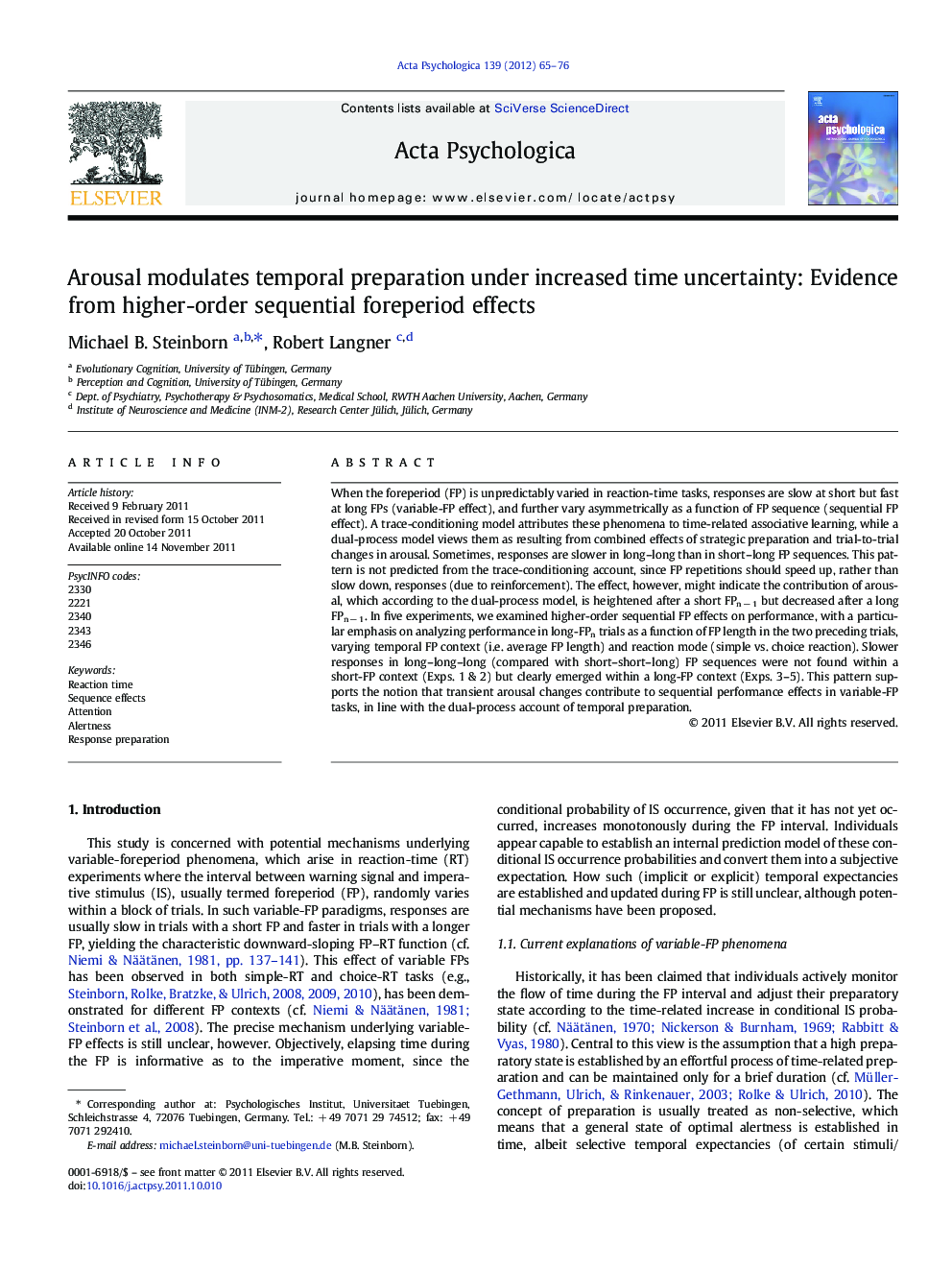| Article ID | Journal | Published Year | Pages | File Type |
|---|---|---|---|---|
| 920094 | Acta Psychologica | 2012 | 12 Pages |
When the foreperiod (FP) is unpredictably varied in reaction-time tasks, responses are slow at short but fast at long FPs (variable-FP effect), and further vary asymmetrically as a function of FP sequence (sequential FP effect). A trace-conditioning model attributes these phenomena to time-related associative learning, while a dual-process model views them as resulting from combined effects of strategic preparation and trial-to-trial changes in arousal. Sometimes, responses are slower in long–long than in short–long FP sequences. This pattern is not predicted from the trace-conditioning account, since FP repetitions should speed up, rather than slow down, responses (due to reinforcement). The effect, however, might indicate the contribution of arousal, which according to the dual-process model, is heightened after a short FPn − 1 but decreased after a long FPn − 1. In five experiments, we examined higher-order sequential FP effects on performance, with a particular emphasis on analyzing performance in long-FPn trials as a function of FP length in the two preceding trials, varying temporal FP context (i.e. average FP length) and reaction mode (simple vs. choice reaction). Slower responses in long–long–long (compared with short–short–long) FP sequences were not found within a short-FP context (Exps. 1 & 2) but clearly emerged within a long-FP context (Exps. 3–5). This pattern supports the notion that transient arousal changes contribute to sequential performance effects in variable-FP tasks, in line with the dual-process account of temporal preparation.
